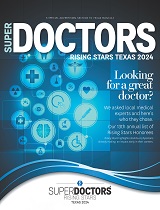DALLAS, April 17, 2012 - The American Heart Association has developed a program to help more people survive cardiac arrest. During a cardiac arrest, the heart stops beating, and unless it is restarted within minutes, the person usually dies.
Mission: Lifeline ® is expanding to include a Cardiac Resuscitation program to establish and streamline systems of care for response and treatment to improve survival rates. The program will provide public education and support for coordination among the lay public, public health agencies, legislators and city officials with emergency medical services (EMS) providers and hospitals to improve care for patients with cardiac arrest.
Mission: Lifeline was originally launched in 2007 as a program to improve care for people suffering from ST-elevation myocardial infarction (STEMI) - the deadliest form of heart attack - or damage to heart muscle caused by a blocked blood supply to the heart.
The chain of survival for STEMI spans from what bystanders do to help the stricken person, to the actions of EMS and hospital personnel, to post-hospital care.
"The system of care needed for a person who has a cardiac arrest in the community is much the same as it is for STEMI; many cardiac arrest patients also have STEMI," said Christopher B. Granger, M.D., chair of the American Heart Association's Mission: Lifeline Advisory Working Group. "We know how to improve survival, but the simple things - like training people to recognize cardiac arrest, call 9-1-1 and perform hands-only CPR - are not being done for most victims. Success depends on a coordinated and systematic approach for the community.
"We've had great success in improving the system of care for STEMI patients. Now, it's time to turn our attention to saving the lives of people who suffer cardiac arrest."
Out-of-hospital cardiac arrest strikes about 382,800 Americans each year - killing nearly 90 percent.
Early and effective CPR, along with early access to defibrillation to shock the heart to restore a normal rhythm, is essential to patient survival.
However, the United States does not have organized approaches to treatment.
"There is a large variation in survival after out-of-hospital cardiac arrest from one community to the next," said Graham Nichol, M.D., volunteer for Mission: Lifeline and professor and director at the University of Washington-Harborview Center for Prehospital Emergency Care in Seattle. "We believe that whether you live or die after cardiac arrest should not depend on which community you live in."
Nichol said people must recognize possible cardiac arrest, call 9-1-1 and begin CPR immediately.
"In most communities in the United States, about 20 percent of patients who have cardiac arrest have bystander CPR," he said. "In communities that are very successful in improving survival, like Seattle and parts of Arizona, 40 percent to 50 percent get bystander CPR. We know we can improve care, but only if everybody in a community works together."
"We already have successful systems in place with the Mission: Lifeline STEMI program now covering more than 64 percent of the country," said Granger, professor of medicine at Duke University Medical Center in Durham, N.C. "And we're seeing these systems work - our STEMI death rate has dropped to 4.8 percent in 2010 from 5.8 percent two years before. That translates to more than 14,000 lives saved."
"The American Heart Association is a leader in the science and generation of evidence about how to perform resuscitation," Nichol said. "It's only right that we now look to Mission: Lifeline to have a major impact on improving cardiac arrest survival."
For more information about Mission: Lifeline, visit www.heart.org/missionlifeline . To learn more about how you can help saves lives with CPR, visit www.heart.org/cpr .
###
The American Heart Association/American Stroke Association receives funding mostly from individuals. Foundations and corporations donate as well, and fund specific programs and events. Strict policies are enforced to prevent these relationships from influencing the association's science content. Financial information for the American Heart Association, including a list of contributions from pharmaceutical companies and device manufacturers, is available at www.heart.org/corporatefunding .
QI12 - 1002 (M:L-CR-Granger/Nichol)
CONTACT:
Cathy Lewis - (214) 706-1324;
[email protected]For Public Inquiries: (800) AHA-USA1 (242-8721)
www.heart.org ; www.strokeassociation.org

